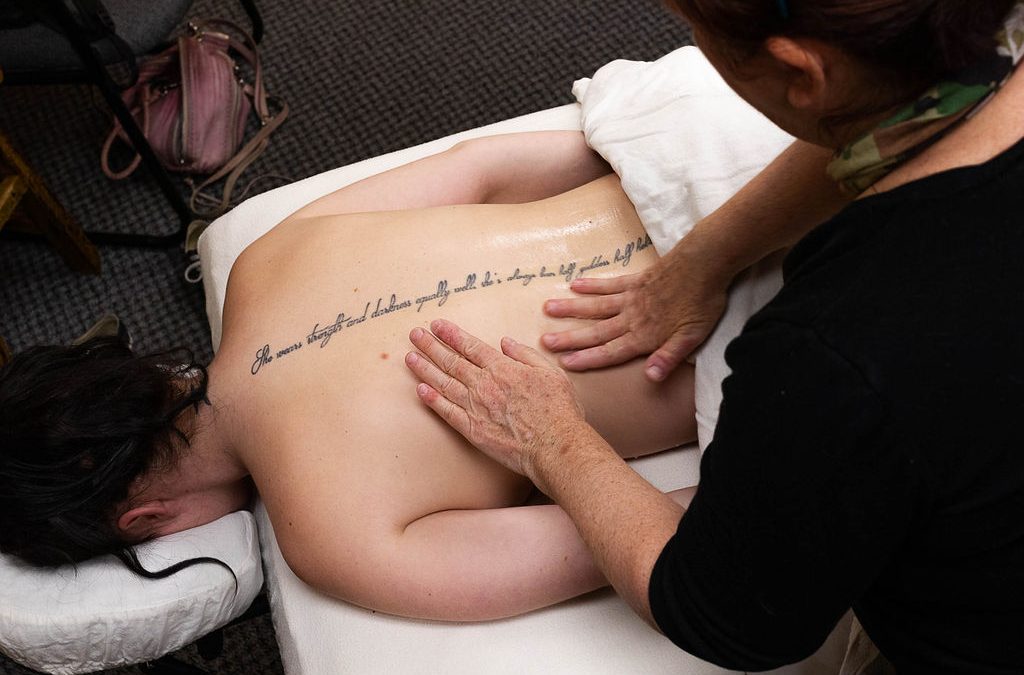Janet Matthies explains why lower back pain often originates in the hips and hamstrings, not the back at all. She offers 2 simple stretches to help fix the problem.
Helping yourself with muscle pain or strain can be a very daunting and challenging venture! When a muscle hurts, more often than not, the cause of the pain is coming from another part of your body, not where you feel it. This can be tricky to figure out and it’s often hard to understand what you should do to help yourself. In this article I will be talking about the hip flexor and hamstring muscles, optimal posture and what it looks like, I will also define how muscles compensate for another, injured, muscle by stepping in as a substitute and finally I will suggest a plan of action to help you troubleshoot any pain or imbalance you may have in your own body.
Balancing Muscles
The body is like a huge multi-dimensional pulley system made up of pairs of muscles that balance one another. When one side of a pulley is lowered, the other side comes up. In muscle talk, when one muscle contracts its pair (the balancing muscle) stretches. If the pulley system malfunctioned, the rope would jam, break or over-stretch and this is exactly what happens in your body when muscles aren’t working properly. Let’s learn more to uncover the root of what is happening.
Proper Posture
Posture is extremely important for creating a fully balanced performance. Proper posture ensures that the muscles of the body are optimally aligned so they can function efficiently. Proper posture allows for:
- Proper joint mechanics and effective shock absorption.
- Efficient communication between the nervous system and the muscles.
- Functional strength, which allows your muscles to move in all directions with strength and flexibility.
- The brain to tell your body which muscles to use and how, and at which moment.
So in the proper posture, everything in your body stretches optimally and you have strength that matches your flexibility, creating the perfect balance in each of the many muscle groups in your body while it moves in any direction.
Muscular Imbalance – What Is Happening?
Muscular imbalance happens when one muscle group is used MORE than another, or when you injure one muscle and start using other muscle groups as a substitute, and many other reasons. Certain muscles in our bodies are more prone to being tight and inflexible, or overstretched and weak. Once you have a muscular imbalance the nervous system has a more challenging job communicating messages to the muscle groups. Short tight muscles will react more slowly than normal and will work at times that they should normally be resting. Short tight muscles will also override those muscles that would normally function during an activity due to muscle malfunction. When you are using a muscle, the muscle opposite is typically sent a message to relax. The malfunction occurs when the muscle can’t relax because it’s too tight, it just keeps working. This is a very typical compensation pattern which will highlight a problem in the overworking muscle. Meanwhile the problem exists in the muscle that should be working.
Tight Hip Flexor
As an example, let’s look at how tightness in the hip flexor muscle works with the hamstrings to create lower back problems. In this example, the root problem is overly-contracted, or tight, hip flexor muscles combined with weak under-contracted hamstrings. Typically, this will happen if the hip flexors are constantly in a shortened position as they would be if you sit for long periods of time at work without ever stretching (see fig. 1).
Fig 1
At the same time, during sitting, while your hip flexor muscles are contracted or shortened, the hamstrings are being overstretched or extended. After doing this for 40 hours a week at your job, you start to create an imbalance in your muscles on the front of your body (contracted/shortened hip flexors) and the back (overstretched/weak hamstrings). The hip flexors may never feel any pain so you never realize what is happening, or that anything is happening at all.
One day you may be at the supermarket, reaching up to the top shelf for a product and feel something in your lower back twinge! If you think about what you are doing with your body while extending to reach, you may notice that the hip flexors are extended; your legs are no longer in a 90 degree bent position seated on your chair. As you extend the hip flexors in the front of your body, at the same time, you are contracting the hamstring muscles in the back of your legs. Because you spend so much time sitting down, your hamstrings are not used to being contracted in this manner. They may have grown so weak they are unable to shorten to the length that this type of extension requires.
Hip flexor muscles reach from the top of your thigh bone to the inside of your lumbar spine (the portion of your spine that runs between your bottom rib and the top of your sacrum). It is a very vulnerable portion of spine because it is unsupported. When your hip flexors are very tight from sitting all day, when you stand up it feels like you can’t unbend; the hip flexors that run into the lower spine are so tight they want to keep you from extending as shown in fig.2. This means that the imbalance between your hip flexors and hamstrings shows up as pain in your lower back.
FIG 2
The hamstrings are not able to contract because they have grown so weak from all the overstretching they have to do while you sit at your desk. They stop short when being asked to contract and this results in a problem or pain. The hip flexors and hamstrings need each other to be in perfect balance in order to achieve all possible ranges of motion. To keep this ratio true, so that no imbalance occurs, you need to keep the hip flexors stretched every day, and simultaneously strengthen the hamstrings until more balance is achieved.
So when you have pain in your lower back, or if you have a hamstring pull, stretching your hip flexor muscles will get to the root of the problem and bring your front and back body back into proper balance.
Solution
To troubleshoot this problem, during the course of the day it would be amazingly helpful to stand at your desk and do these two simple stretches:
Standing Front Leg Stretch
Stand firmly, holding onto your desk if you need extra support to help you balance. Bend your right leg and place your right hand on top of your foot to hold your leg in a bent position (use a yoga strap if you are really tight). Keep your knees together, as you press the top of your foot into your hand as if you are trying to push your hand away. You will feel a stretch in the front of your thigh. Repeat with the left leg.
Standing Hamstring Stretch
Place your right heel onto a level, stable surface high enough to give what feels like just enough reach for your hamstring, this could even be a small stool if you are very tight. Press your heel into the surface as you bend from the hips, slowly reaching only as far as your body will allow. Take some deep breaths while you hold this position. Repeat with the left leg.
This will help keep the hamstring loose behind your knee and will counteract the tightness from sitting.
I hope you’ve found this blog interesting and helpful. Please let me know how you find these stretches and share any other comments in the box below.
Keep Stretching!
Janet Matthies
1st July 2014
How To Fix Your Low Back Pain
Janet Matthies
Related posts
Categories
- Flexibility & Strength (12)
- Healing for Meridians (10)
- Holistic Lifestyle (3)
- Lymphatic Drainage (5)
- Massage (3)
- Meridian Archetypes (19)
- Spiritual (1)
- Traditional Chinese Medicine (11)



